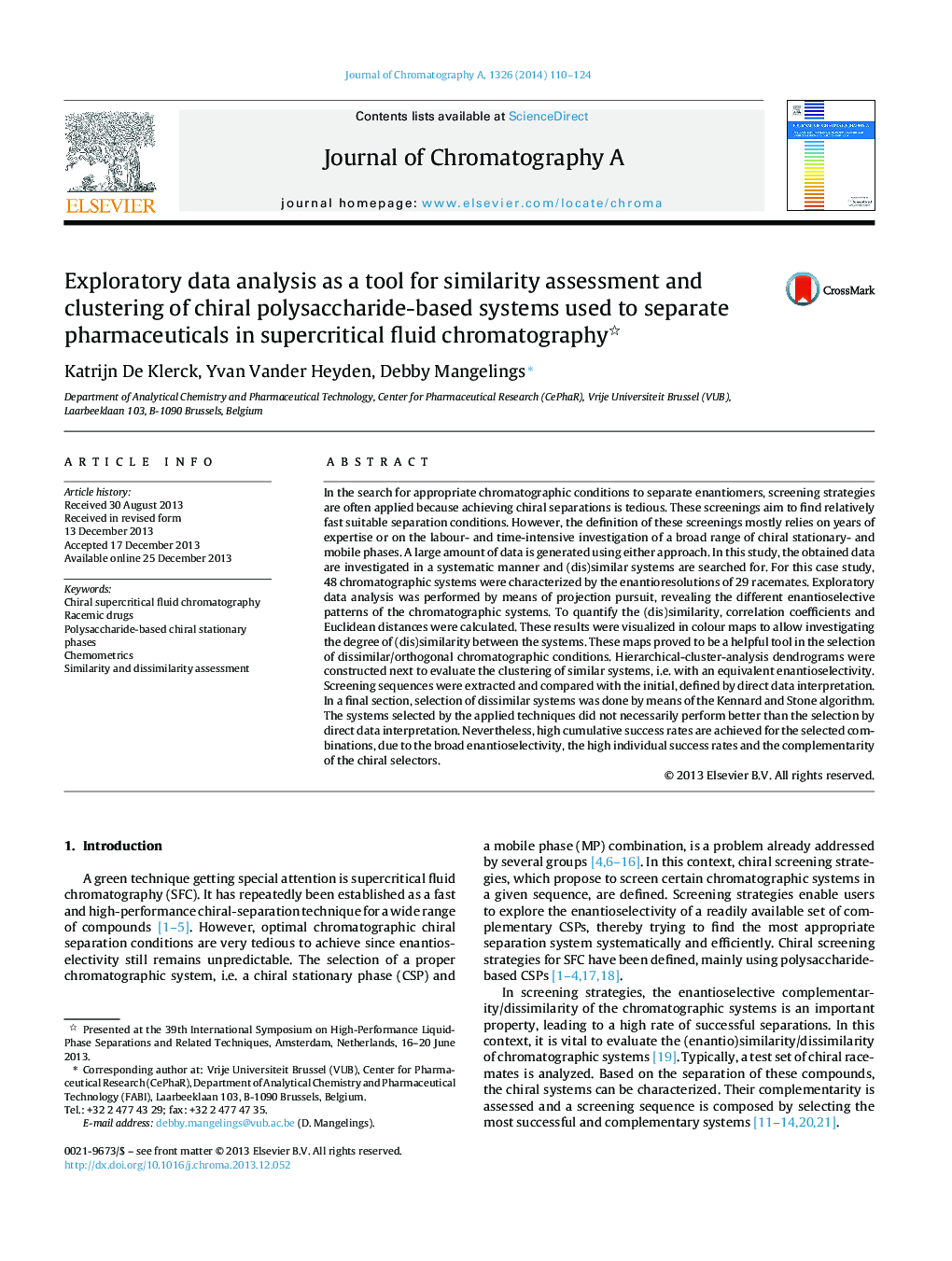| Article ID | Journal | Published Year | Pages | File Type |
|---|---|---|---|---|
| 1200793 | Journal of Chromatography A | 2014 | 15 Pages |
•Chemometric exploratory analysis of separation data from chiral pharmaceuticals on polysaccharide-based systems.•Indication of aberrant enantioselective patterns by projection pursuit.•Colour maps based on the correlation coefficient or Euclidean distance.•(Dis)similar enantioselective systems derived from dendrograms.•Selection of dissimilar chiral systems by the Kennard and Stone algorithm.
In the search for appropriate chromatographic conditions to separate enantiomers, screening strategies are often applied because achieving chiral separations is tedious. These screenings aim to find relatively fast suitable separation conditions. However, the definition of these screenings mostly relies on years of expertise or on the labour- and time-intensive investigation of a broad range of chiral stationary- and mobile phases. A large amount of data is generated using either approach. In this study, the obtained data are investigated in a systematic manner and (dis)similar systems are searched for. For this case study, 48 chromatographic systems were characterized by the enantioresolutions of 29 racemates. Exploratory data analysis was performed by means of projection pursuit, revealing the different enantioselective patterns of the chromatographic systems. To quantify the (dis)similarity, correlation coefficients and Euclidean distances were calculated. These results were visualized in colour maps to allow investigating the degree of (dis)similarity between the systems. These maps proved to be a helpful tool in the selection of dissimilar/orthogonal chromatographic conditions. Hierarchical-cluster-analysis dendrograms were constructed next to evaluate the clustering of similar systems, i.e. with an equivalent enantioselectivity. Screening sequences were extracted and compared with the initial, defined by direct data interpretation. In a final section, selection of dissimilar systems was done by means of the Kennard and Stone algorithm. The systems selected by the applied techniques did not necessarily perform better than the selection by direct data interpretation. Nevertheless, high cumulative success rates are achieved for the selected combinations, due to the broad enantioselectivity, the high individual success rates and the complementarity of the chiral selectors.
